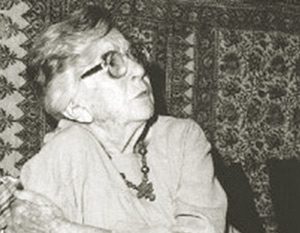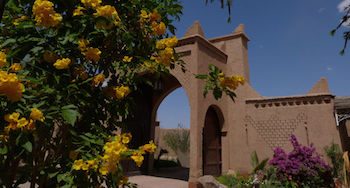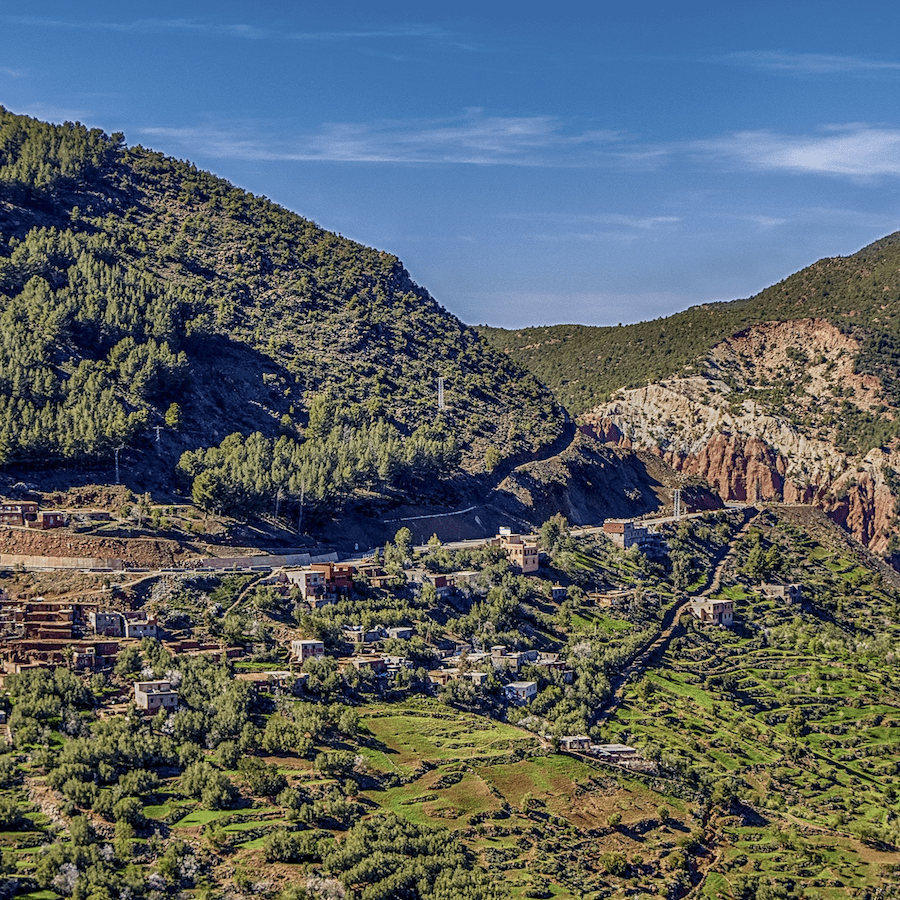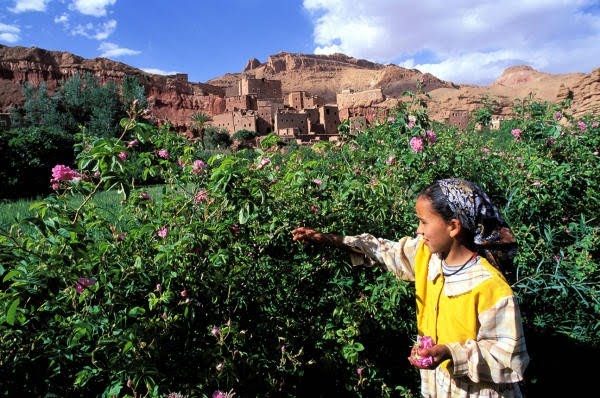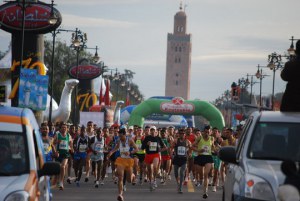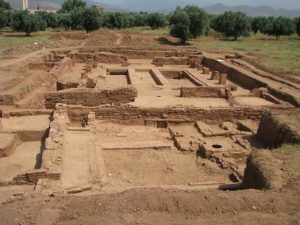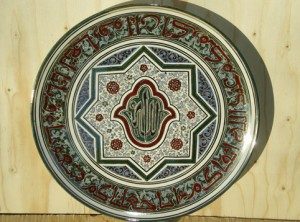Merzouga is a small dusty town in Morocco about 450 miles from Marrakech and close to the Algerian border. Ouarzazate is the closest large town. Merzouga is 50 km from the town of Erfoud and Rissani. It is the gateway to the Moroccan desert.
Denise Masson was not only a leading Islamic scholar of Marrakech, she was “La Dame de Marrakech” par excellence .. a woman who celebrated the medina where she lived and continues to be part of the memory of this city and Morocco.
There are a number of Eco lodges (Atlas Mountain Hotels) in Morocco which offer travelers the opportunity to escape the urban environment and enjoy the beauty of its countryside and the rural communities. The Kasbah Toubkal at Imilil 60 km from Marrakech is one of the most famous. A converted Kasbah, it sits on a hill and is a ten minute walk from the village. Kasbah Toubkal surrounded by the mountains and a blissful Mountain Hotel worth more then a one night stay. It serves as a lodge for those planning to climb Mount Toubkal but it is also a brilliant getaway. Sitting on the terrace looking out at the surrounding countryside while at Kasbah Toubkal is a stunning experience.
The Ourika valley is 30 km from Marrakech and is one of the best places to visit in Morocco for hiking in the Atlas Mountains and seeing its unique countryside. Getting there by grand taxi of bus or one of the many tourist travel companies is easy. The valley starts at Souk Tnine de l’Ourika leading on to the village of Arhbalou then on to Tazzidfount leading up to the trekking area of Adrar Yagour which has prehistoric rock carvings. trekking further afield ahould be undertaken with a guide,equipment and proper planning.
Wine production in Morocco is believed to have been introduced by Phoenician settlers, and was definitely established in the era of Ancient Rome. Large-scale wine production with extensive vineyards was introduced into Morocco by the French during the protectorate as it was in Algeria and Tunisia. Today’s regions in Morocco that have become famous for wine are Meknes, Casablanca and Essaouira.
At the small town of El Kelaa M’Gouna (also referred to as the Valley of Roses) in the South of Morocco, a 140km East of Ouarzazate, in the heart of Dades Valley one can see the manual harvest of Damas roses and the Rose Festival in May each year.
There is a thriving local industry distilling rose water, introduced by the French in the 1930’s and cosmetic products such as soaps, gels, creams, sprays and oils and dried rosebuds these can be bought on site.The buds are dried for use in cosmetics, home decoration and cooking, while the petals are distilled into rose water and, ultimately, rose oil, a key ingredient in many perfumes. Distillation is made in two factories in the Valley of Roses area and in April and May it is possible to visit Kelaâ’s factory, set up in a former kasbah.In Kelaâ Des Mgouna , Morocco there is also a dagger factory, in the mellah, where the Jewish craft is perpetuated, with handles and sheaths made in cedar wood or in camel bones, ornate with silver, and fixed on blades coming from another small village a few kilometres away.
Celebration is an important aspect of Moroccan culture. Morocco is an exciting and entertaining country that lays claim to cultural, historical and religious holidays and festivals. At any given point of the year there is a Moroccan city or Berber community hosting glorious festivities. Moroccan celebrations can last anywhere from a few days up to two weeks. There are hundreds of local festivals and mouassems in Morocco. The dates when Morocco Festivals and moussems are someimes decided by religious authorites consulting the moon so dates oftheseevents are sometimes not announced very far ahead . Here are some of the more well known ones with exact dates in 2013, where available.
Marrakech has been celebrating the Marrakchia Music festival since the Saadian dynasty in the 15th and early 16th century.It takes place in February each year and celebrates traditional music passed down by generations in honour of the seven patron saints or ‘Sabaatou Rijal’ of Marrakech.
The Medieval site of Aghmat can be found beside the modern village of Ghmat which is 30 km south east of Marrakech in the northern foothills of the Atlas Mountains in Morocco. Professor Ron Messier, Professor Emeritus Middle Tenessee State University and Senior Lecturer in history at Vanderbilt University and his codirector Professor Abdallah Fili faculte des letters Universite d’El Jadida have been following a trail of gold a it was part of the camel caravan routes from sub-Saharan Africa through the ancient city of Sijilmassa which Ron Messier’s team excavated through to Morocco’s Medieval Capital, Aghmat. Coins minted in Sijilmassa have been found in an excavation in Jordan and Aghmat too minted coins for the Almoharavid empire which stretched into Spain.
There are many Moroccan designers, artists and craftsmen breaking new ground and leading innovations in lifestyle and creativity. Moroccan Designers Ahmed Laghrissi, Hicam El Madi and Myriam Mourabit are three exceptional practioners of their art. All were born in Morocco and have been influenced by either great family artists, their environment and Moroccan visual arts and culture. When visiting Morocco on a Pottery and Zellij Tile Design tour or on your own, one can discover galleries, souks and private spaces filled with these and many other visual artists. Morocco is a mecca of great designers ranging from Moroccan pottery to furniture to tile work, painting and lighting.


